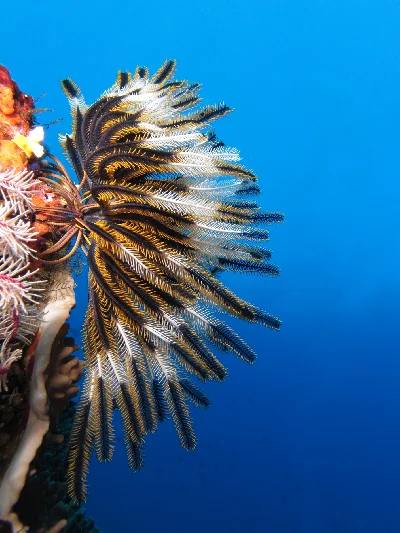Crinoidea
Crinoids are a class of marine invertebrates known as Crinoidea. In their juvenile form, crinoids are attached to the sea bottom by a stalk and are commonly referred to as sea lilies. Alternatively, the unstalked forms of crinoids, known as feather stars or comatulids, belong to the largest crinoid order, Comatulida. undefined in the phylum Echinodermata, crinoids are part of a diverse group that also includes starfish, brittle stars, sea urchins, and sea cucumbers. They inhabit both shallow waters and depths of up to 9,000 meters (30,000 ft).
Adult crinoids possess a unique upper-surface mouth surrounded by feeding arms. This mouth is connected to a U-shaped gut, with the anus located on the oral disc near the mouth. While the basic echinoderm pattern of fivefold symmetry is evident, most crinoids have subdivided their five arms into ten or more. These arms are adorned with feathery pinnules and are spread wide to collect planktonic particles from the water. While many crinoids once possessed a stem for attachment, most now only attach themselves as juveniles and become free-swimming as adults.
Presently, there are approximately 700 living species of crinoids. However, this class was once far more abundant and diverse in the past. Some limestone beds from the mid-Paleozoic era to the Jurassic period consist primarily of disarticulated crinoid fragments.


